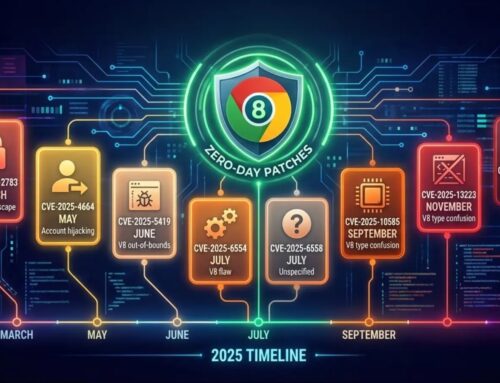
Hackers Actively Attacking Telecommunications & Media Industry to Deploy Malicious Payloads
The telecommunications and media industries, cornerstones of our interconnected world, are under an escalating and sophisticated cyber assault. Recent analysis reveals a disturbing trend: cybercriminals are actively targeting these critical sectors to deploy malicious payloads, aiming to compromise infrastructure and establish persistent control. This isn’t merely about data breaches; it’s about debilitating services that underpin modern society. Understanding the tactics and fortifying defenses is paramount for every organization within these industries.
The Escalating Threat to Telecom and Media
Cybercriminals are intensifying their focus on the telecommunications and media landscape. This isn’t a random opportunistic attack; it’s a strategic campaign. Threat actors are systematically targeting network operators, media platforms, and broadcasting services. Their objective is clear: gain unauthorized access to core systems and implant malicious code. This infiltration allows for the establishment of persistent command-and-control mechanisms, offering attackers a foothold for future operations, data exfiltration, or service disruption.
The implications of these attacks are far-reaching. A compromised telecom network can lead to widespread service outages, impacting communications for millions. Likewise, a successful assault on a media platform can result in content distortion, disinformation campaigns, or the disruption of vital news dissemination. These industries are not just targets due to their data holdings, but because of their integral role in national infrastructure and public discourse.
Understanding Malicious Payloads and Deployment Vectors
The term “malicious payload” refers to the harmful component of a cyberattack. This could be anything from ransomware, which encrypts systems and demands payment, to advanced persistent threats (APTs) designed for long-term espionage and data theft. In the context of telecom and media, these payloads are often tailored to exploit specific vulnerabilities within large-scale network infrastructure or content delivery systems.
Deployment vectors are varied but commonly include:
- Phishing and Spear-Phishing: Targeting employees with deceptive emails carrying malicious attachments or links that, when clicked, initiate the payload download.
- Exploiting Software Vulnerabilities: Leveraging unpatched software flaws in network devices, servers, or applications to inject malware. For example, a critical vulnerability like CVE-2023-38827 (though not specific to this report, it illustrates a common type of exploit) could be used to gain initial access.
- Supply Chain Attacks: Compromising third-party vendors or software suppliers to inject malware before it reaches the target organization. This is particularly effective in complex IT environments prevalent in these industries.
- Insider Threats: Malicious actors within an organization, or employees whose credentials have been compromised, can directly facilitate payload deployment.
Remediation Actions for Telecommunications and Media
Defending against these sophisticated attacks requires a multi-layered and proactive cybersecurity strategy. Organizations must prioritize robust security measures to protect their critical infrastructure.
- Vulnerability Management and Patching: Regularly scan for and patch all known vulnerabilities across all systems and applications. This includes network devices, servers, and endpoint software. Establish a strict patching cadence and emergency response plan for zero-day exploits.
- Enhanced Endpoint Detection and Response (EDR): Deploy advanced EDR solutions to monitor endpoints for suspicious activity, detect malicious payloads in real-time, and enable rapid response to threats.
- Network Segmentation: Implement strong network segmentation to isolate critical systems. If one part of the network is compromised, segmentation can prevent the attacker from moving laterally to sensitive areas.
- Identity and Access Management (IAM): Enforce strict access controls, multi-factor authentication (MFA) for all accounts, and regular reviews of user permissions. Implement the principle of least privilege.
- Security Awareness Training: Conduct regular and engaging security awareness training for all employees, focusing on recognizing phishing attempts, social engineering tactics, and safe computing practices.
- Incident Response Plan: Develop and regularly test a comprehensive incident response plan. This plan should detail steps for detection, containment, eradication, recovery, and post-incident analysis.
- Threat Intelligence Sharing: Participate in industry-specific threat intelligence sharing programs to stay informed about emerging threats and attacker tactics.
- Supply Chain Security: Vet all third-party vendors and suppliers for their security posture. Implement strong contractual agreements regarding cybersecurity standards and audits.
Recommended Security Tools
Implementing the right security tools is crucial for effective defense. Here are some categories of tools vital for telecommunications and media entities:
| Tool Category | Purpose | Example Tools (Illustrative) |
|---|---|---|
| Endpoint Detection & Response (EDR) | Real-time threat detection, investigation, and response on endpoints. | CrowdStrike Falcon, SentinelOne, Microsoft Defender for Endpoint |
| Vulnerability Scanners | Identify and categorize security weaknesses in networks and applications. | Tenable Nessus, Qualys, OpenVAS |
| Security Information & Event Management (SIEM) | Collect and analyze security logs from various sources for threat detection. | Splunk Enterprise Security, QRadar, Elastic SIEM |
| Multi-Factor Authentication (MFA) | Adds an extra layer of security for user authentication. | Duo Security, Okta, Microsoft Authenticator |
| Network Intrusion Detection/Prevention Systems (IDS/IPS) | Monitor network traffic for suspicious activity and block attacks. | Palo Alto Networks, Cisco Firepower, Suricata |
Conclusion
The telecommunications and media industries are high-value targets for cybercriminals. The active deployment of malicious payloads by sophisticated threat actors necessitates a heightened state of vigilance and a fortified defense strategy. Organizations must move beyond basic security practices, embracing advanced protections, rigorous vulnerability management, and comprehensive incident response planning. The integrity of our global communication and information flow depends on the robust security of these critical sectors.





